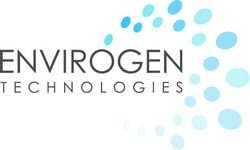Emissions Control Technology Manages VOCs, HAPs and Odors in Industrial Facilities
Envirogen Technologies launched a new technology designed to help industrial facilities manage their air emissions performance and meet regulatory and permit requirements through the control of volatile organic contaminants (VOCs), hazardous air pollutants (HAPs) and odors. The Envirogen Sustainable Emissions Control offering features the use of both biological and enhanced adsorption treatment technologies to address a broad range of contaminants covered under the Clean Air Act and state air quality regulatory programs.
Used alone or together, the two technology approach allows Envirogen to treat organic and inorganic, polar and non-polar emission constituents at varying concentrations and air flow rates. The initial applications for Envirogen Sustainable Emissions Control will be in refinery and chemical manufacturing facilities, but the solutions are applicable in a broad range of manufacturing environments.
Envirogen offers a range of biological treatment systems for use in controlling industrial air emissions, including biofilters, biotrickling filters and combinations of the two technologies. The natural process of biofiltration uses microorganisms fixed to a porous filter bed medium to metabolize pollutants present in an air stream, consuming them as food or as an energy source.
The end products of this degradation are typically water vapor, carbon dioxide and mineral salts. Biological treatment is suitable for contaminants that are water-soluble, polar and readily biodegradable. They are particularly effective for low loading applications at high flow volumes – including odors caused by hydrogen sulfide (H2S) and other reduced sulfur compounds. Biological treatment offer low energy consumption, chemical usage and significantly lower long-term operating costs.





